The Design Commission has approved the Division 28 Homes, a 10-unit co-housing development in the Richmond neighborhood designed by Hacker architects. Urban Development Partners is acting as the owner’s representative. The project is being developed for one extended family, with members of varying ages, with the intention that family members are able to age in place. At the ground level the building would also include retail space and a restaurant with outdoor seating. 15 vehicular parking spaces are proposed in a below-grade garage.
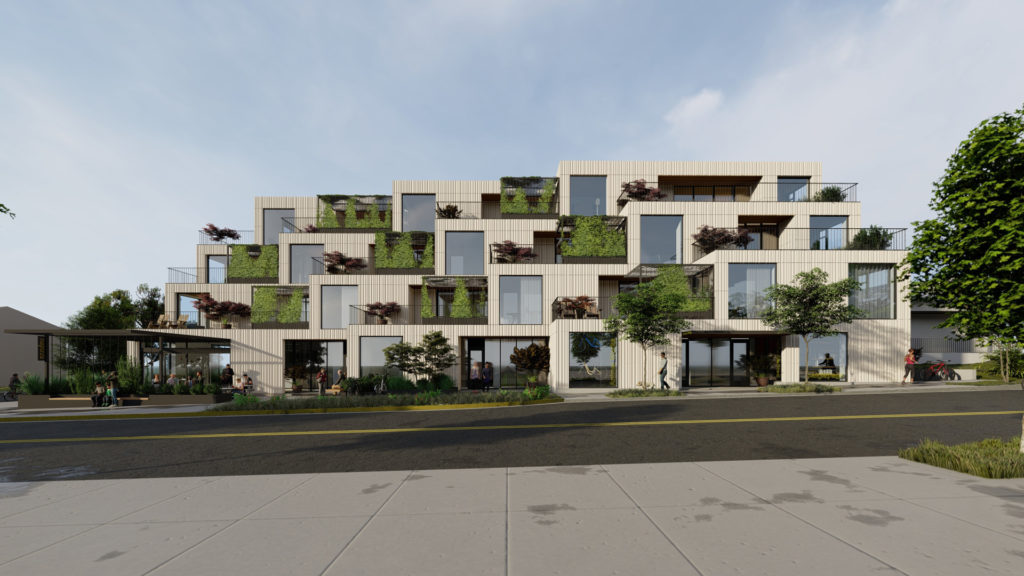
The 15,200 sq ft site is at the corner of SE 28th Pl and Division St. The site previously housed two single family houses and two commercial buildings, one of which housed Clay’s Smokehouse until it closed in 2018. The structures have now been demolished.
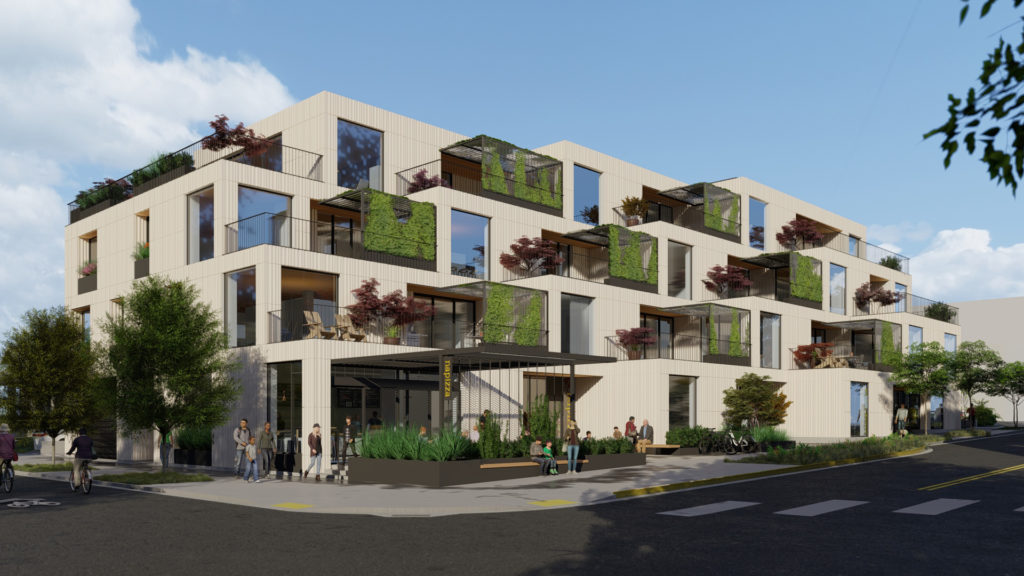
In addition to the commercial spaces, the building would include three residential units at the ground floor; four units at the second floor; and three units at the third floor. The fourth floor would be shared common space.
The mass of the four story building is eroded along the SE Division frontage by a series of outdoor terraces, placed over the roof of the unit below. Trellises on the roof terraces would be planted with twining evergreen vines.
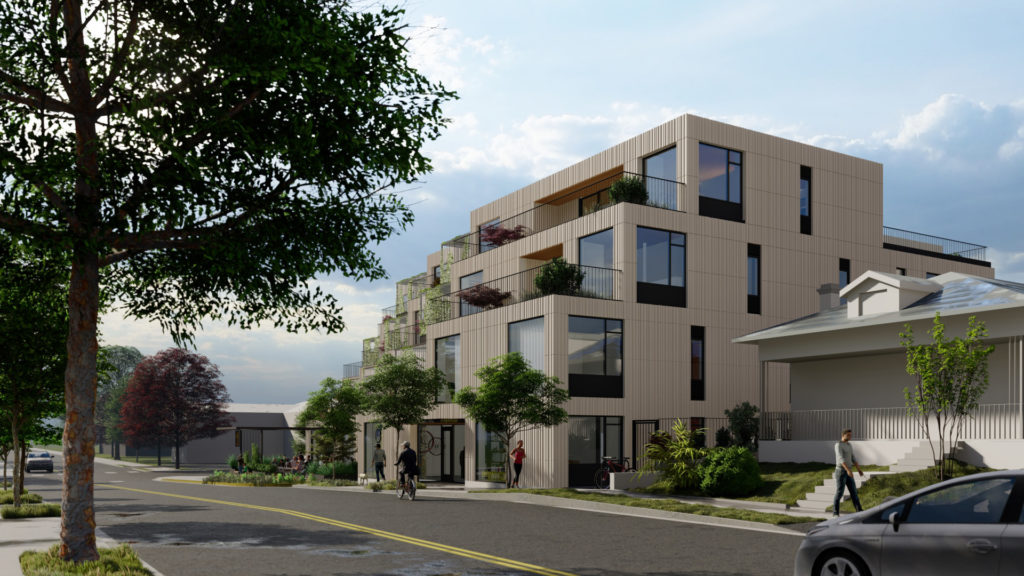
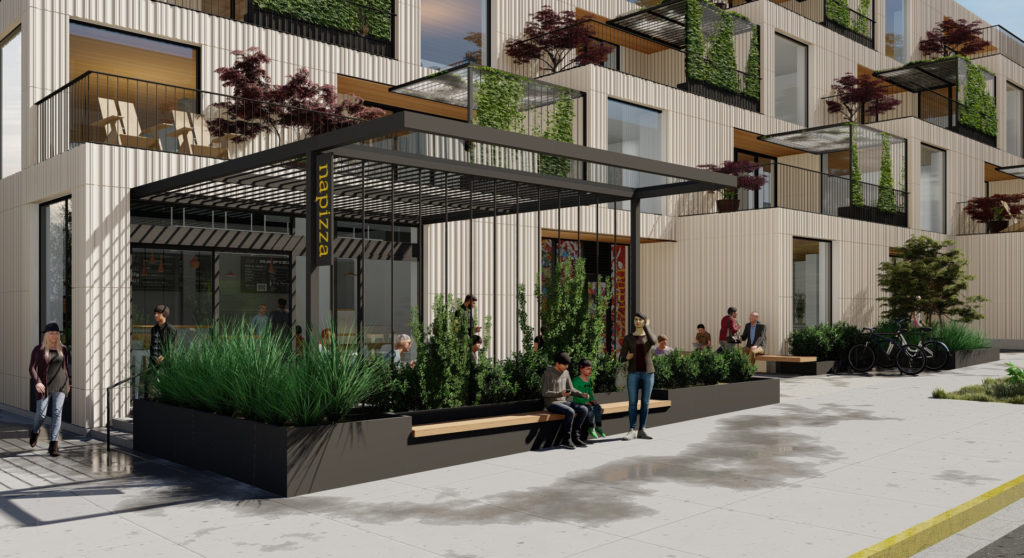
The primary material proposed is a terracotta panel system, with a fluted surface texture. Other materials proposed include Ceraclad fiber cement panels at the rear of the building, fiberglass windows, steel guardrails, and metal screens.
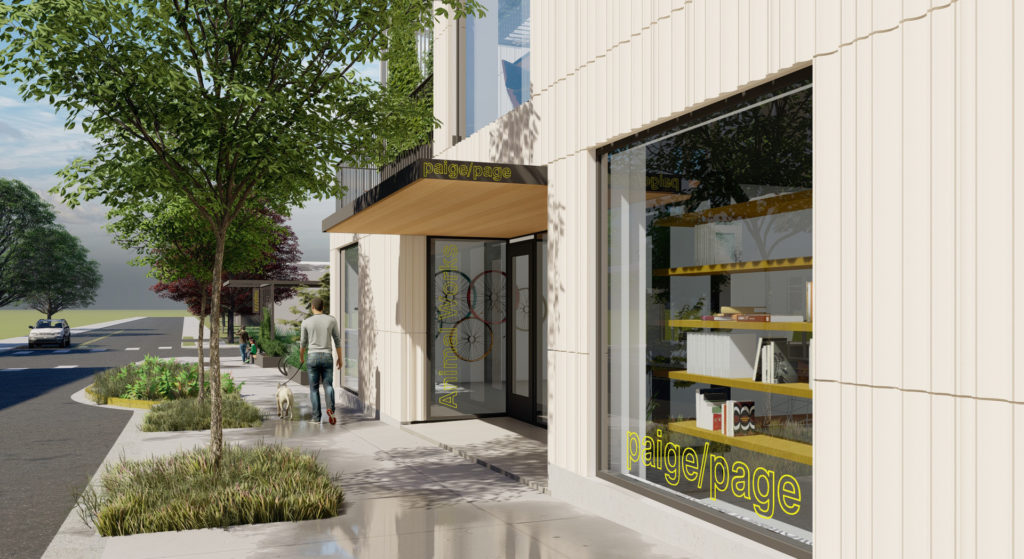
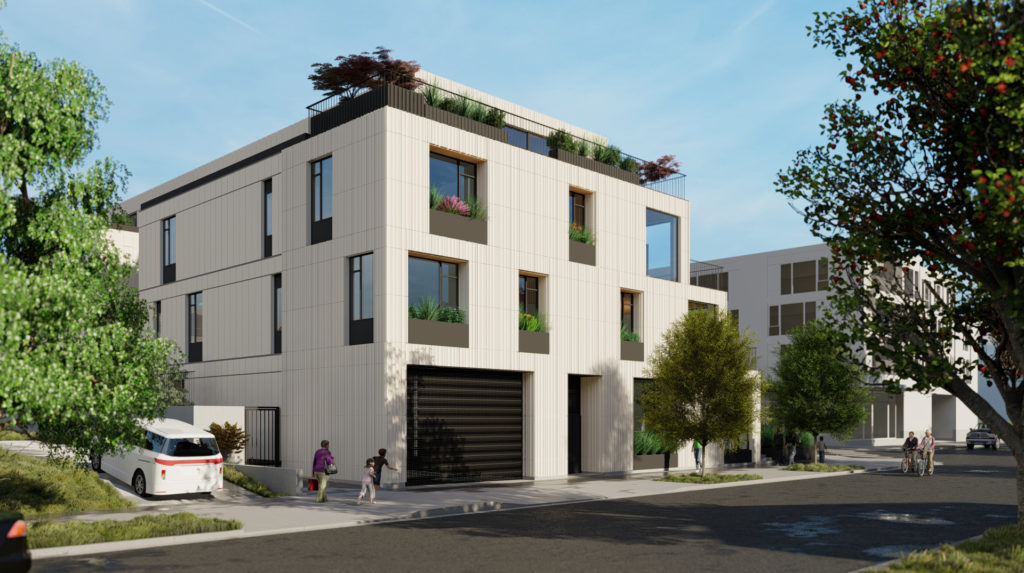
The Division 28 Homes were approved by a unanimous vote of the Design Commission on December 19th, 2019. The project had previously received Design Advice in August, 2019.
In the Final Findings and Decision by the Design Commission it was noted how the project blends elements of multi-family and single-family home design:
The proposal is design as mixed-use multi-family development with aspects of single-family home design. The building form, with terraces stepping back to provide occupiable outdoor spaces at upper stories, encourages connectivity between building occupants at all upper story levels with that activity at the street level while allowing light and air to meet the street. The stepped terraces also allow for interaction between these “yards”, where neighbors can see each other and connect.
A building permit for the project is currently under review.
Drawings
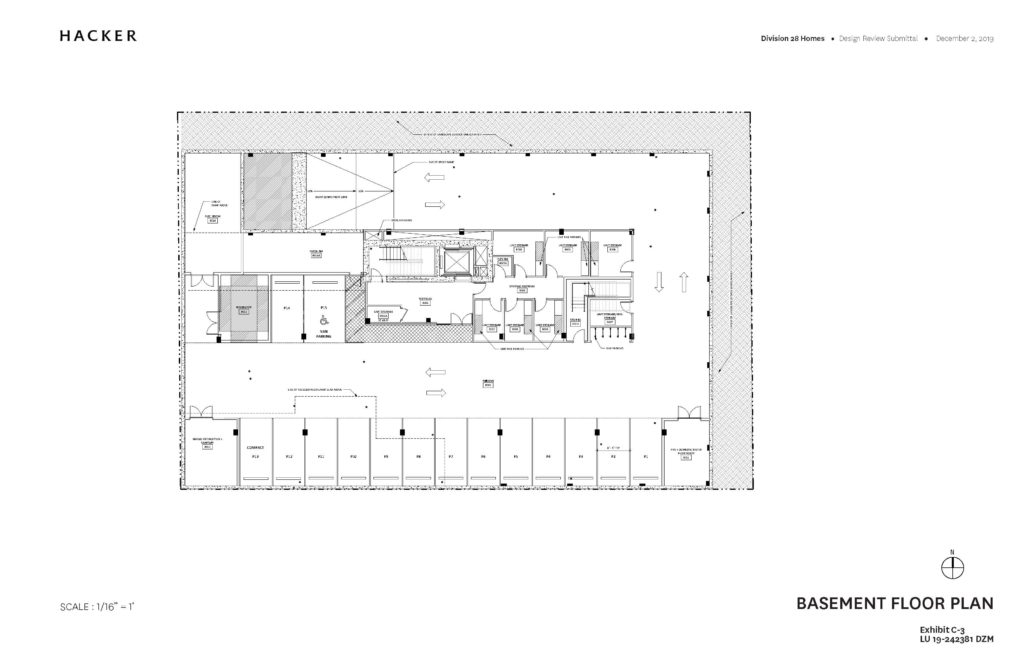
Plan | Basement 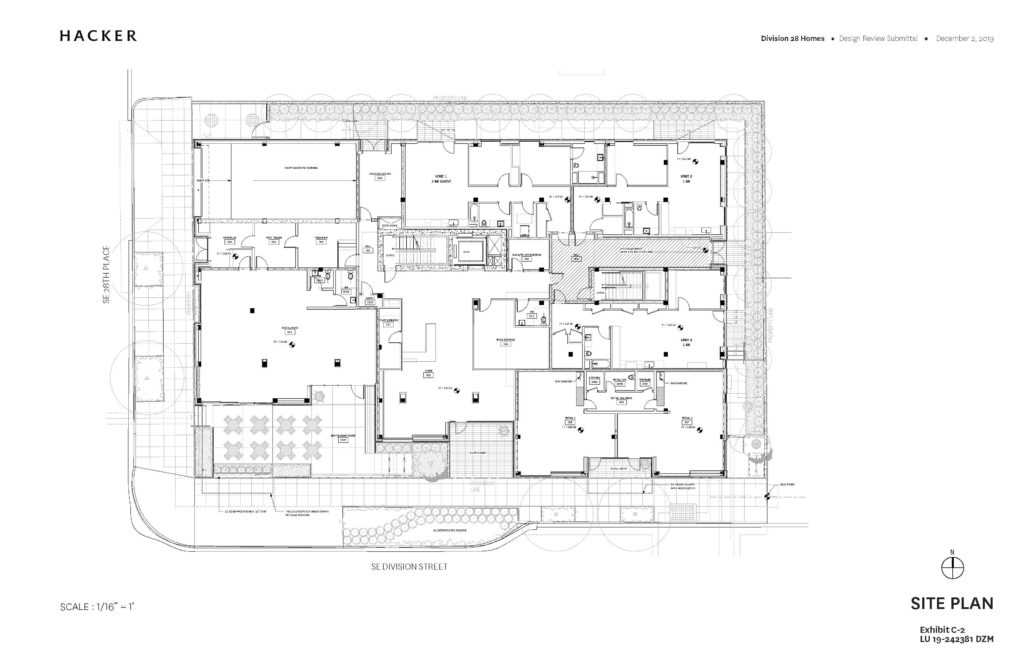
Plan | Site 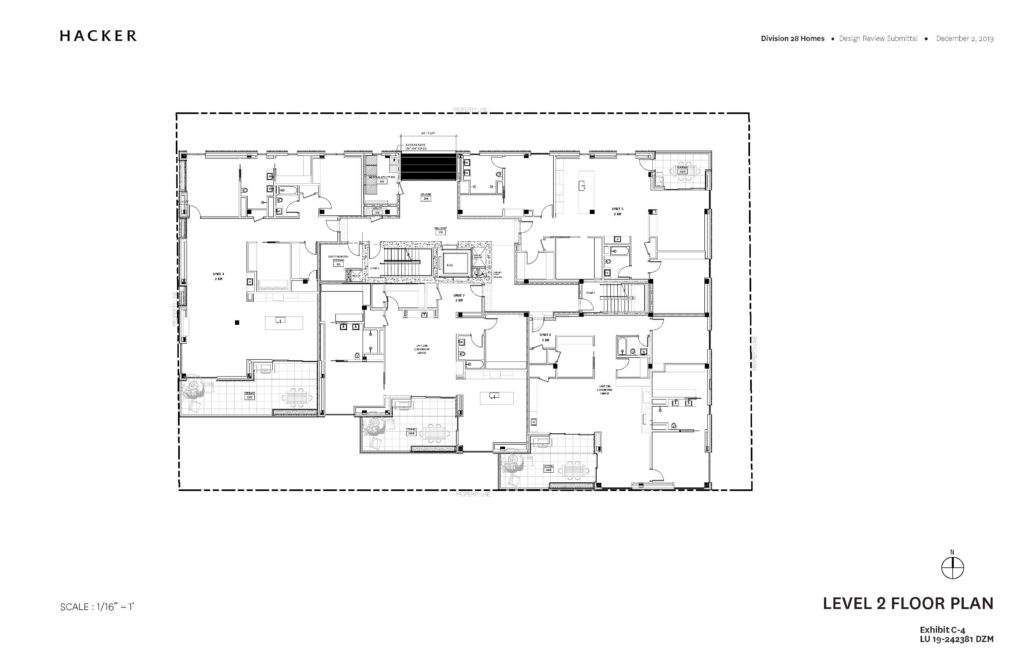
Plan | Level 2 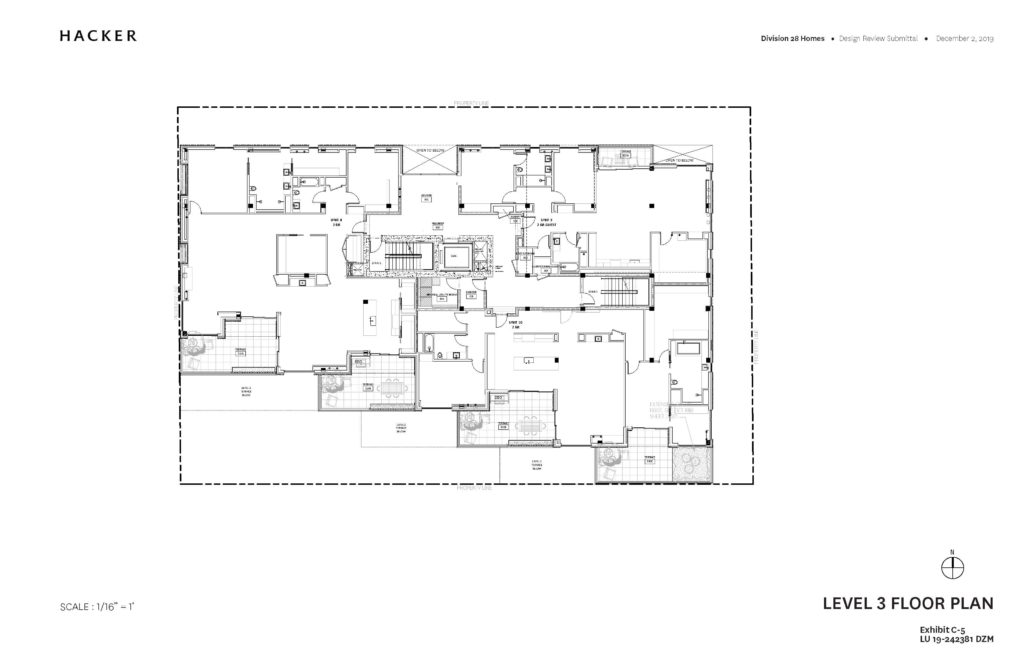
Plan | Level 3 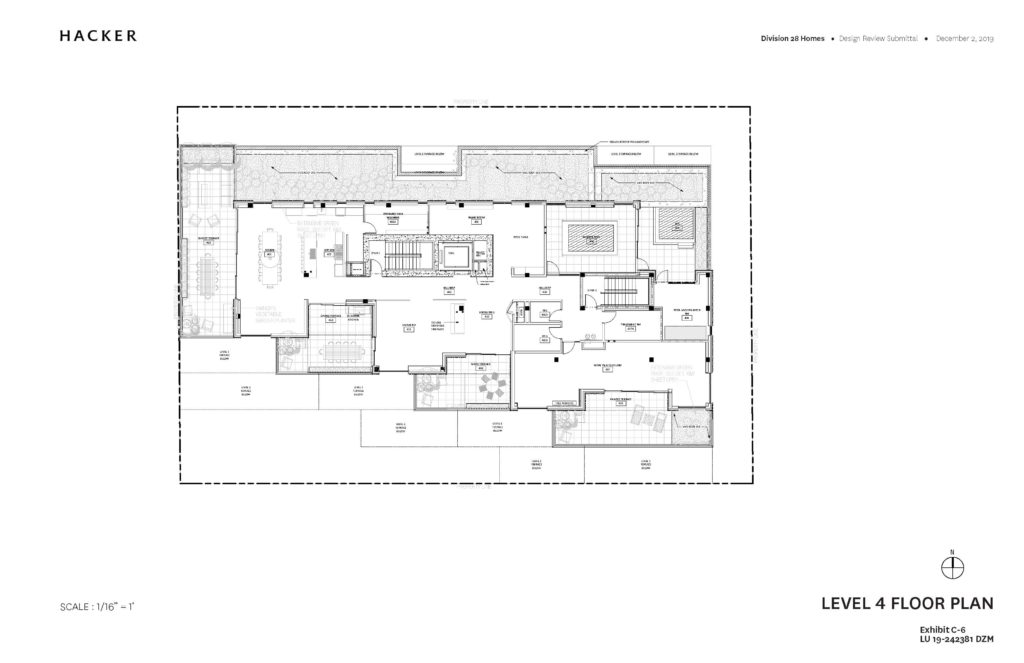
Plan | Level 4 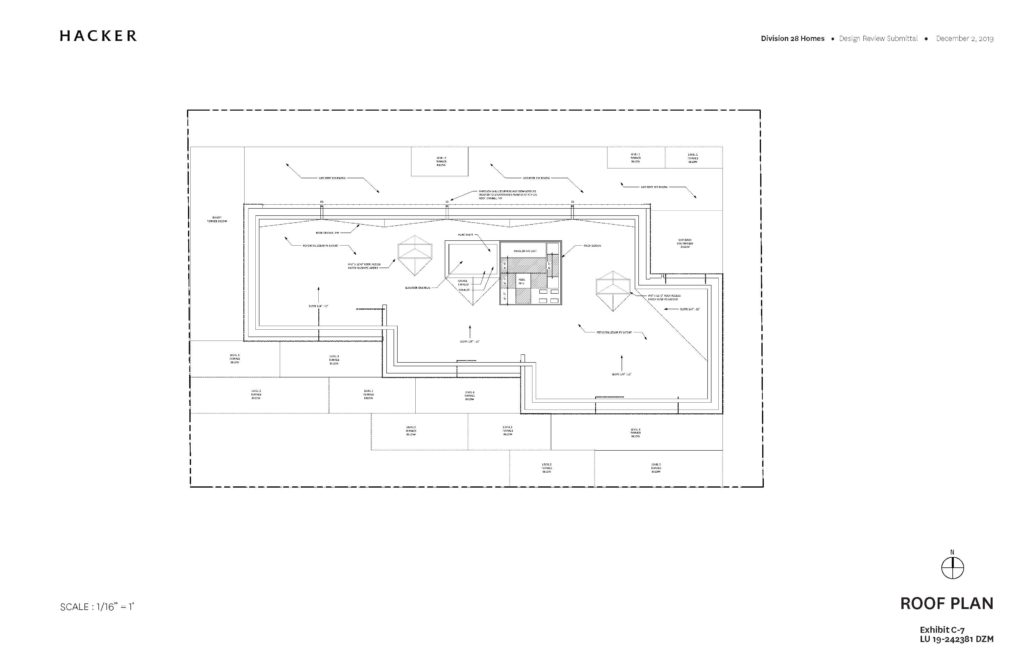
Plan | Roof 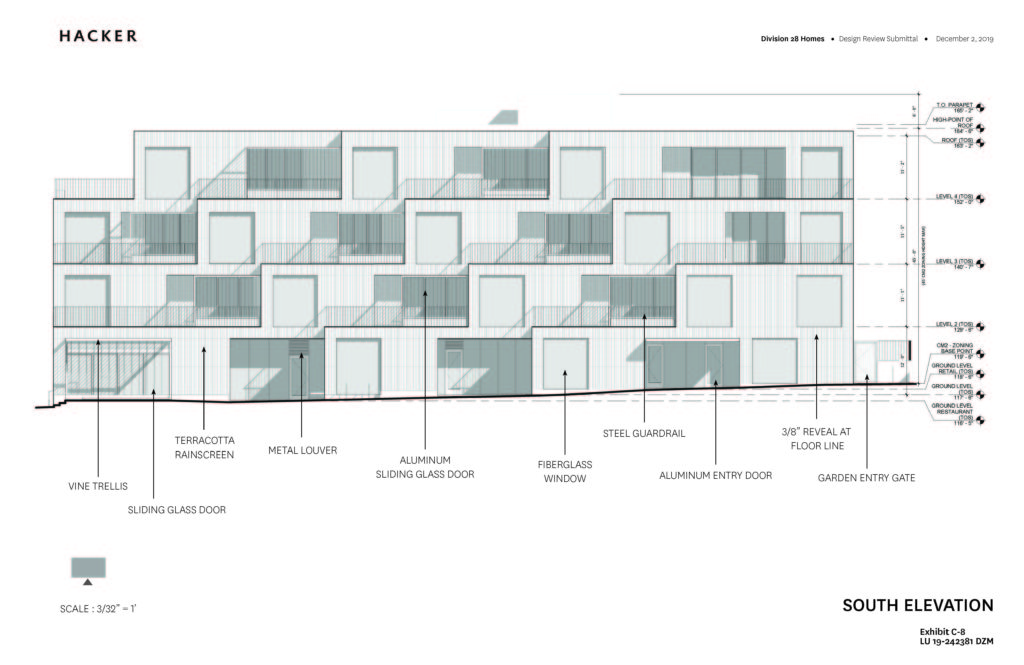
Elevation | South (SE Division St) 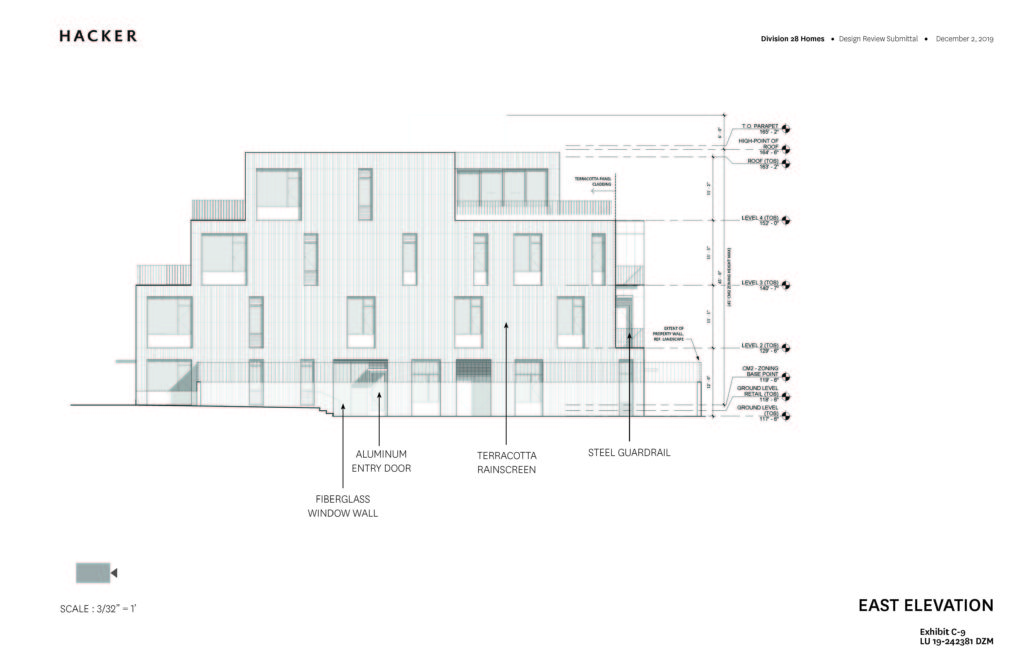
Elevation | East 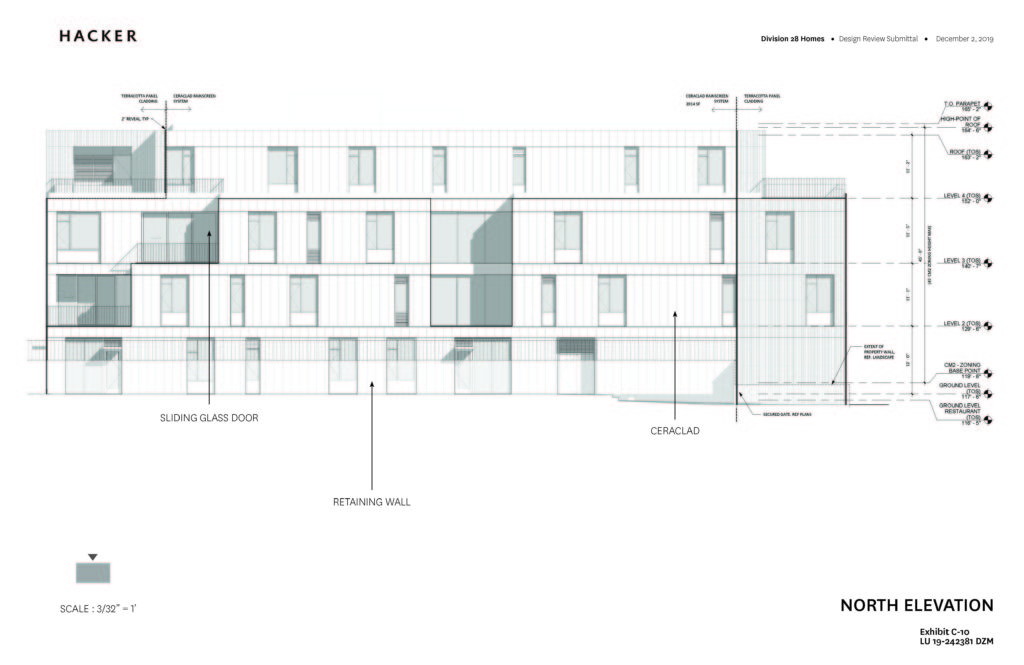
Elevation | North 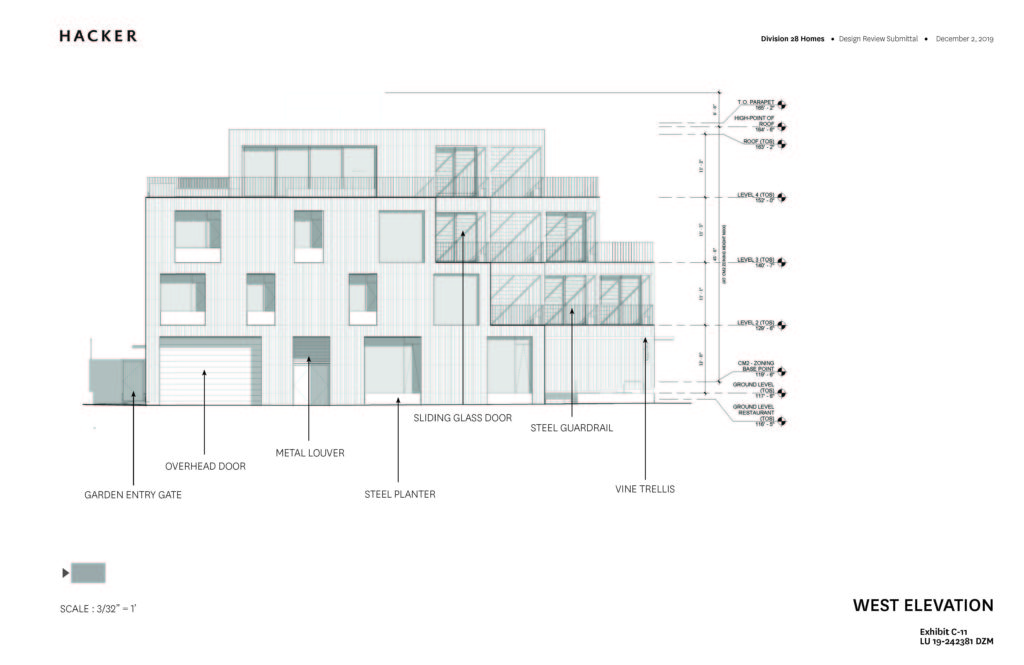
Elevation | West (SE 28th Pl) 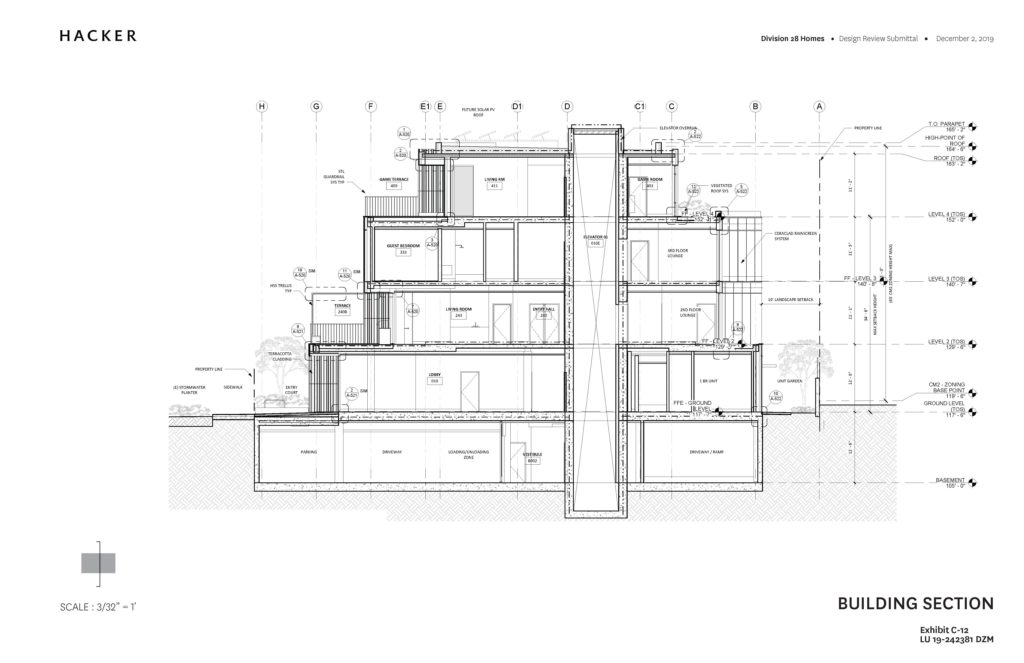
Section 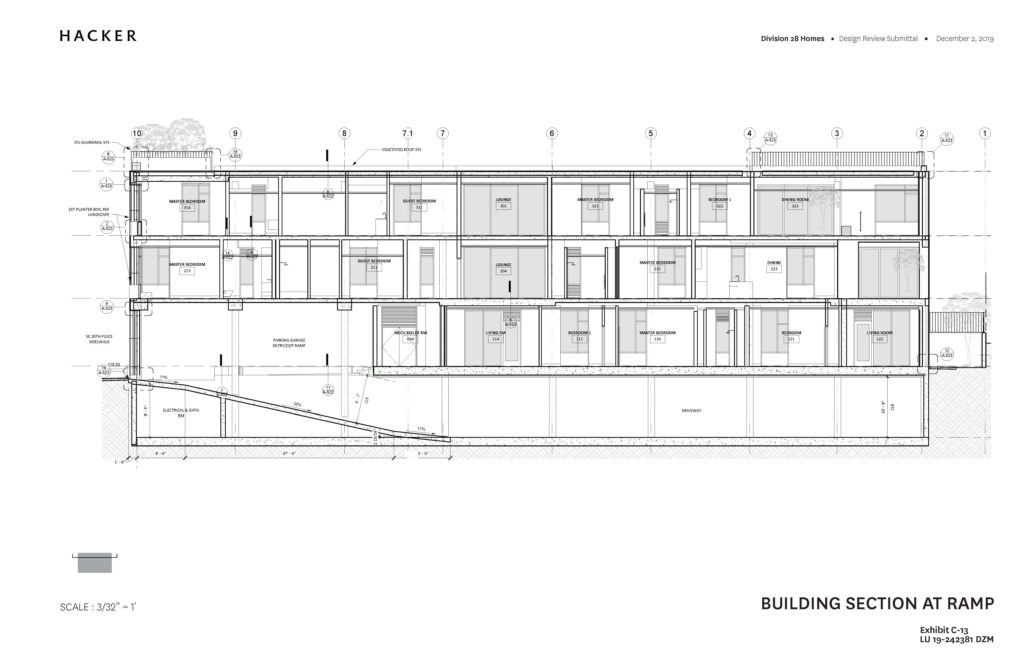
Section 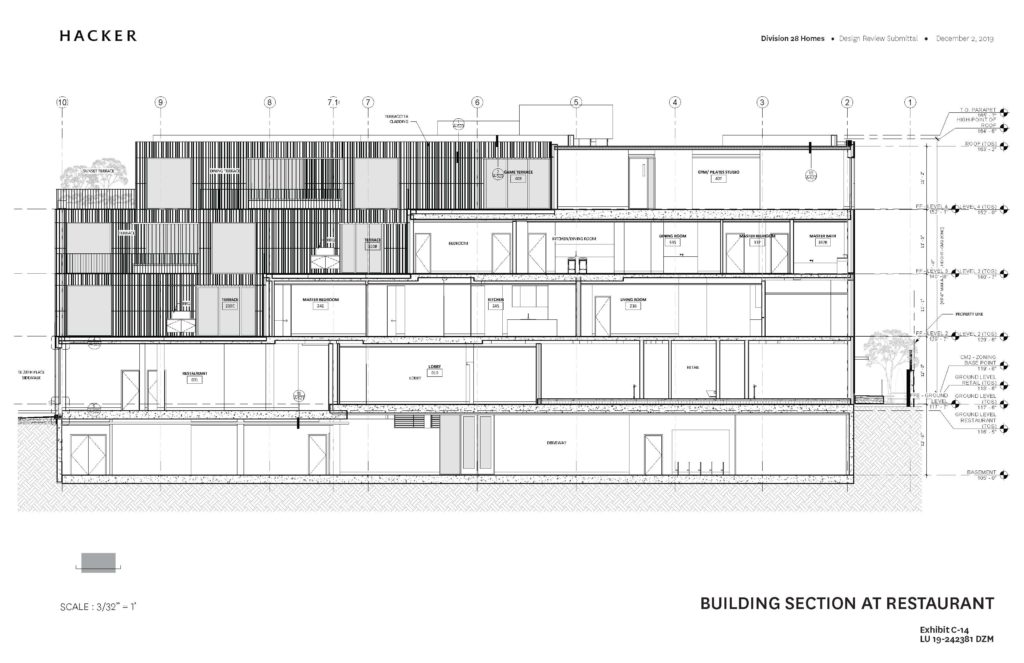
Section
I love this, both the concept and the execution.
Curious if UDP being the “owner’s representative” means UDP takes a lower fee percentage than as “developer”? Would also be interesting to know if having a “representative” (who is a developer) was a necessity for financing?
They’re probably just project managing for the developer. Keeps the project moving smoothly and keeps the developer out of the weeds.
Thanks for the reply Matt. Yes, I can infer a PM role, but “owner’s representative” takes on a different character. Also, a PM fee, as I understand, is significantly lower than that which appears on a developer’s pro forma. One reason I ask relates to a cohousing project in Seattle, which forced (for lack of a better word) a cohousing development group to have a developer (“representative”) on board in order to underwrite the project. I was curious to know if the same was required with this Portland case.
Love it! Its straight lines and staggered design seems to fit in the neighborhood. The recessive aspect of the building as it goes higher also seems non imposing. Would love one of the units on the top floor with its balcony and deck access.
Will see how the balconies look after people really use and occupy this building and not just live in it as a still life pretty rendering.
RH, I agree, but this is always the case with renderings. What encourages me about the balconies of this development is their size. For me, the test of a balcony is whether a dinner party can be had on it. The minimum for a party of four people is at least 6′ by 8′. Here, I’m optimistic since these look bigger than that.
Have a dinner party and be on stage to all the neighbors above you. Be sure they can hear you.
Wonderful
I understand that people may want different things from their city. If I were to live along SE Division, I would expect the hubbub of people interacting publicly, whether dining on the street or on balconies. And I’m not sure it’s all that much different from dining on their front porches or in their backyards in full view of passersby and/or neighbors. Fortunately, the Portland metro area offers a variety of living options for people of differing tolerances of openness and conviviality.
Check back in a couple of years to see if it resembles the order of the rendering. Hopefully so but most likely not. The vines shown growing however may be quite appropriate.